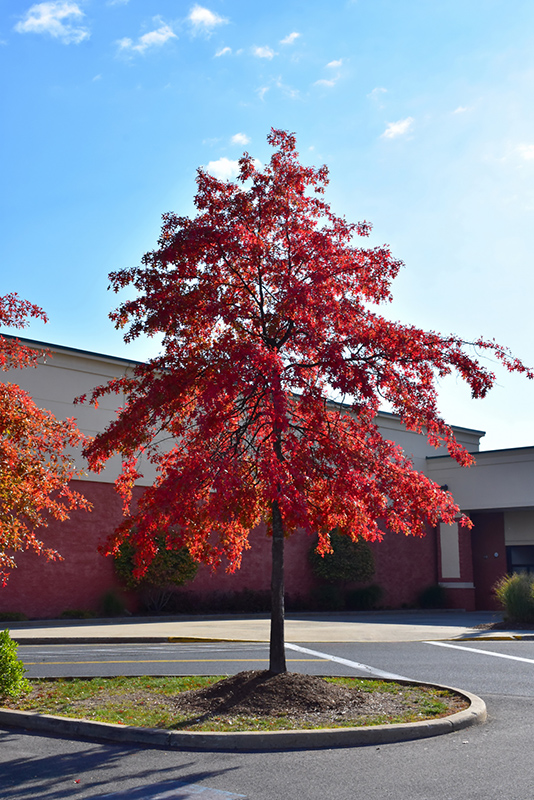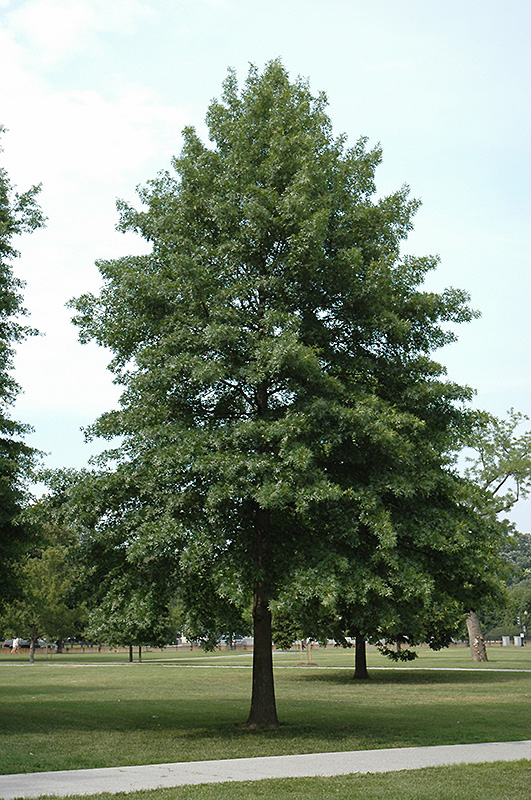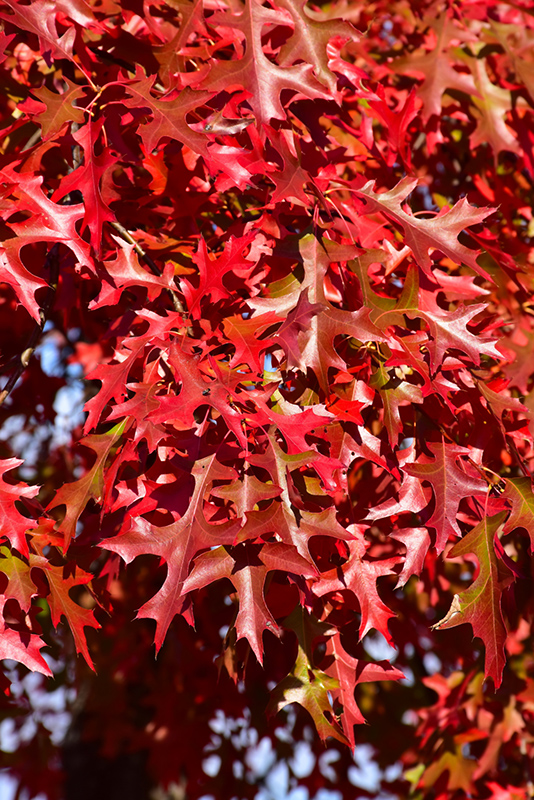Height: 60 feet
Spread: 40 feet
Sunlight:
![]()
Hardiness Zone: 4a
Other Names: Swamp Oak
Description:
An extremely popular tall shade tree with a tightly pyramidal habit of growth and excellent fall color, fast growing for an oak, great for vertical interest or as a street tree; requires loose, acidic soils, develops chlorosis in heavy alkaline soils
Ornamental Features
Pin Oak is primarily valued in the landscape for its distinctively pyramidal habit of growth. It has dark green deciduous foliage. The spiny lobed leaves turn an outstanding red in the fall. However, the fruit can be messy in the landscape and may require occasional clean-up. The furrowed gray bark and silver branches add an interesting dimension to the landscape.
Landscape Attributes
Pin Oak is a deciduous tree with a distinctive and refined pyramidal form. Its average texture blends into the landscape, but can be balanced by one or two finer or coarser trees or shrubs for an effective composition.
This tree will require occasional maintenance and upkeep, and is best pruned in late winter once the threat of extreme cold has passed. It is a good choice for attracting squirrels to your yard. Gardeners should be aware of the following characteristic(s) that may warrant special consideration;
- Messy
Pin Oak is recommended for the following landscape applications;
- Shade
- Vertical Accent
Planting & Growing
Pin Oak will grow to be about 60 feet tall at maturity, with a spread of 40 feet. It has a high canopy with a typical clearance of 7 feet from the ground, and should not be planted underneath power lines. As it matures, the lower branches of this tree can be strategically removed to create a high enough canopy to support unobstructed human traffic underneath. It grows at a fast rate, and under ideal conditions can be expected to live to a ripe old age of 300 years or more; think of this as a heritage tree for future generations!
This tree should only be grown in full sunlight. It is quite adaptable, prefering to grow in average to wet conditions, and will even tolerate some standing water. It is not particular as to soil type, but has a definite preference for acidic soils, and is subject to chlorosis (yellowing) of the foliage in alkaline soils. It is highly tolerant of urban pollution and will even thrive in inner city environments. This species is native to parts of North America.






